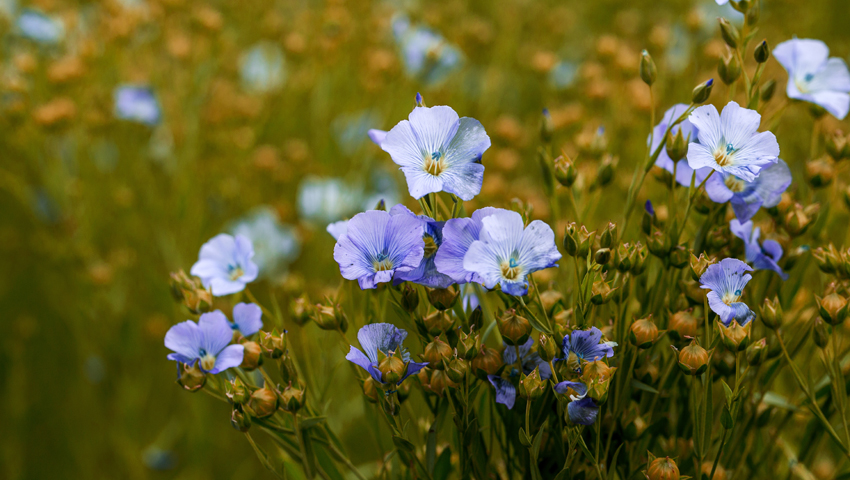FARMERS and crofters are collaborating with weavers and textile makers to revive the ancient craft of linen production in Scotland, in new farmer-led research with Innovative Farmers.
Flax produces an array of blue flowers loved by pollinators and was grown for textile and linen mills across Scotland for many centuries until cheaper imported textiles became popular in the 1900s.
Scottish varieties of fibre flax were lost, but growers now working with farmer-led research network Innovative Farmers are leading a field lab to find new varieties and rediscover lost knowledge on linen fibre crop production.
They hope to demonstrate the crop as an option for nature-friendly rotations that could meet a growing demand for sustainable textiles.
Triallist Jossie Ellis grows vegetables at Lauriston Farm, Edinburgh – a 100-acre site that focuses on community engagement and biodiversity alongside food production. She is providing flax for student research into developing the processing equipment needed to help bring this natural fibre back to the British Isles – as currently there is no commercial processing in Scotland.
Jossie said: “Flax used to be a really important part of the agricultural heritage in Scotland, but it’s been completely lost. The field lab is helping us get a sense of how it performs as a crop, which is important because there must have been different varieties that were developed and grown in Scotland because it’s well suited to this region. Finding the seeds that work here will help contribute to that wider work to bring this industry back to the local area. It’s super exciting.”
While flax is still grown in the UK for seed, these varieties are shorter-stemmed plants that put their energy into producing seeds rather than tall stems, so don’t provide the long fibres needed to make linen.
The three farmers involved in the trial are utilising knowledge from the Netherlands and France, where 70% of the world’s fibre flax is still grown, to discover which varieties might work best in Scottish growing conditions.
The plant grows well in a range of conditions but is known to thrive and grow tall in temperate climates and damp soil, which makes Scotland an ideal location.
